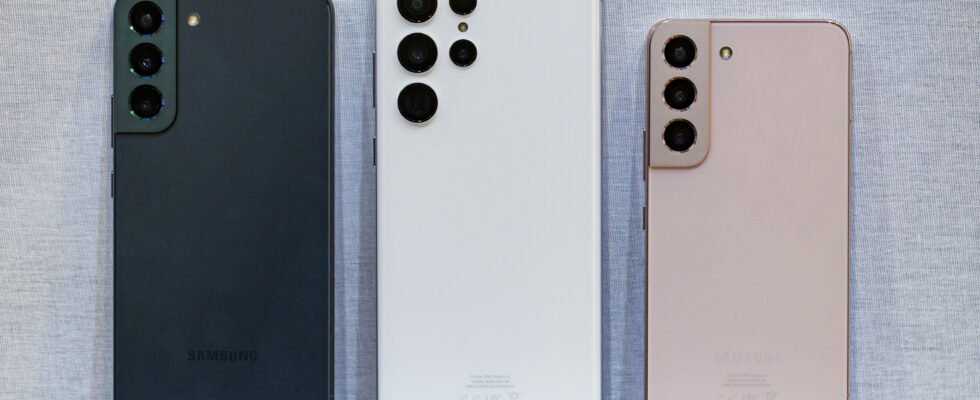Samsung secretly made subsequent changes to the data sheets of the Galaxy S22 series. After doubts about the adaptive frame rate of the displays in the S22 and S22+ models arose online, Samsung has changed the information in the newsroom. The AMOLED panels used are therefore less efficient than initially thought.
- Samsung has subsequently changed the display data for the Galaxy S22 and S22+.
- The panels will not be as energy efficient as previously assumed.
- Changes can already be seen in the global newsroom.
Samsung introduced the new models of the S22 series with numerous improvements. Among them, the manufacturer advertised that it could further improve the energy efficiency of its displays through the use of adaptive frame rates. Samsung’s “Dynamic AMOLED” panels should cover 1-120 Hertz in the S22 Ultra and 10-120 Hertz in the basic models. As is now known, this is obviously not true.
Because, as display experts claim online, this area would not be possible with the LTPS panels used in the S22 and S22+. Ross Young, CEO of Display Supply Chain Consultants, then discovered that Samsung changed the disclosures in the US newsroom some time after the launch. According to the data sheet, the supported refresh rates are now between 48 Hertz and 120 Hertz. The Samsung Galaxy S22 Ultra will continue to ship with an LTPO 2.0 display, which can achieve the advertised dynamics.

The data of the panels have changed! / © notebookcheck.de
What does this mean for us?
Now, of course, comes the question of questions: What does this mean for future owners of the Samsung Galaxy S22 and S22+? Of course, that remains to be seen until we can test the devices. Because it is not yet clear how much the new Exynos 2200 SoC will contribute to energy efficiency. Even if the battery, especially in the standard model, is smaller than in the predecessor, the production using the 4nm process could help to better exploit the battery performance.
From a purely technical point of view, however, the changes in the refresh rate mean that the displays are less energy-efficient than initially thought. The more frequently a display updates the display per second, the more energy is consumed. Lower repetitions per second are therefore more energy-efficient. However, that’s not the only variable when it comes to low-power displays.
NextPit coverage of the launch of the Samsung Galaxy S22
For example, if you activate the overlay for display updates on a mobile phone with an adaptive refresh rate, you will see that displays only rarely use the technically possible range. How energy-efficient an operating system works with such displays depends on the software. Nevertheless, Samsung’s strategy of changing the information after the first media outcry is not exactly confidence-inspiring.
What do you think of the change by Samsung? Would that be a reason for you to ask for your money back? I am looking forward to your comments!
